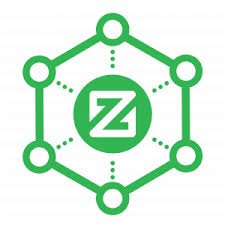
What Is a Znode?
Znodes are incentivized nodes that provide support for transactions. Given that Zerocoin transactions are computationally intensive and are relatively large, it makes sense to have a layer of high performance nodes that can verify and broadcast transactions efficiently and also store the blockchain. Znodes provide a strong support system for the network, providing resilience to the network.
Znode Requirements
• 1000 XZC
• Server (virtual or otherwise) with fixed IP address
• 1 GB RAM
• Adequate storage capacity (~25 GB)
Znode Specifics
A 1000 XZC stake is required for a Znode to operate. This stake is sent to a new address and held. However, this stake remains liquid. That is, you can access your stake at any time and transfer it immediately. You always keep full control over your stake. If you take your stake back, you simply lose the Znode status and become a regular node. There is no penalty assessed for doing so.
Further, Znodes themselves do not hold funds. They hold a Znode key which allows you to start and stop your node. While you should keep your Znode key private, your coins are still safe if it were to be leaked. If leaked, one could only start or stop your Znode. However, going offline will cause you to lose your position in the payment queue.
Any provider you choose for your Znode will not require your actual private key that corresponds to your funds. No funds need to be sent to the provider. The 1000 XZC collateral remains in your local wallet. As such, make sure to secure your wallet, where security involves confidentiality, integrity, and availability.
Each Znode receives a portion of the block reward (30% of the block reward) as their reward for providing support for the network. The return on investment depends on how much of the supply is held in Znodes and the take up rate of the Znodes, where a larger number of active Znodes result in a lower return per Znode. Znodes are put into a queue for the reward. The time it takes to receive a payout depends on how many active Znodes exist. It is estimated that the first year will provide a return of 20-30% per annum based on approximately 50% of circulating coins being converted into Znodes.
The team is exploring further possibilities of using this incentivized node layer which include scalability solutions. Another idea of Znodes is that in the future, Zerocoin processing can be delegated to the Znode layer in the event Zerocoin transactions reach a high volume and nodes can choose to trust the consensus reached by the Znodes instead of having to verify it themselves should they choose to do so.
Motivation
Spend Proofs. Currently, these are 25 kilobytes each. With the adoption of Sigma Protocol (slated for 2018 release), we should see this go down to about 2-3 kilobytes each. However, with the future in mind, having well paid incentivized nodes ensures that nodes will always be able to keep a full copy of the blockchain even if it grows significantly and especially when Zerocoin transactions will be always larger than regular transactions for the forseeable future.
Verification of Zerocoin spend transactions: Zerocoin spend transactions are computationally intensive to verify and in the original paper was benchmarked to take around 0.5 seconds to verify per spend. As Zerocoin transactions become more popular, it is important that the majority of nodes are able to cope with such verifications at speed and incentivizing nodes means that better hardware. Our Zerocoin implementation allows parallelized verification meaning nodes with multiple cores can verify Zerocoin verifications much quicker. For e.g. a top end multiple core CPU like the i7-8700k can verify 100 Zerocoin spends in 8.26 seconds meaning each Zerocoin spend only takes 0.08 seconds. Providing an incentive for nodes allow those hosting nodes to afford better hardware to improve Zerocoin scalability.
Services. In the future, these nodes will provide a layer for additional services.
Znodes vs Masternodes
Masternodes are the term by which other cryptocurrencies call what are similar to Znodes. However, there are a few technical differences which we will highlight:
Mixing. Masternodes such as used in Dash generally support mixing of coins in order to provide anonymity. This, of course, requires trust in the Masternode. The Masternode sees all transactions coming in and can examine them, if it wishes, prior to providing anonymity. Znodes, however, do not require this trust. Using zero knowledge proofs, spend transactions can be verified as having a properly minted coin without knowing which mint it is. Privacy is preserved prior to entering the Znode. As such, you do not need to trust that the node will maintain your anonymity.
Governance. Masternodes generally contain a governance system whereby those nodes provide a decentralized system of decision-making. Our opinion is that the current way it is implemented in Dash allows too much centralization of decision making in large masternode holders. At this time, Zcoin does not implement any governance system within Znodes though the team are exploring ways that this can be done in a fairer manner.
Wrapping Up
Znodes provide a foundation of strength for the network, supporting necessary operations and reducing load on others. In doing so, Znodes are granted a substantial reward. Further, Znodes provide a layer upon which to build features in the future.
For more information on Znodes visit https://zcoin.io/znodes/
and check out this video